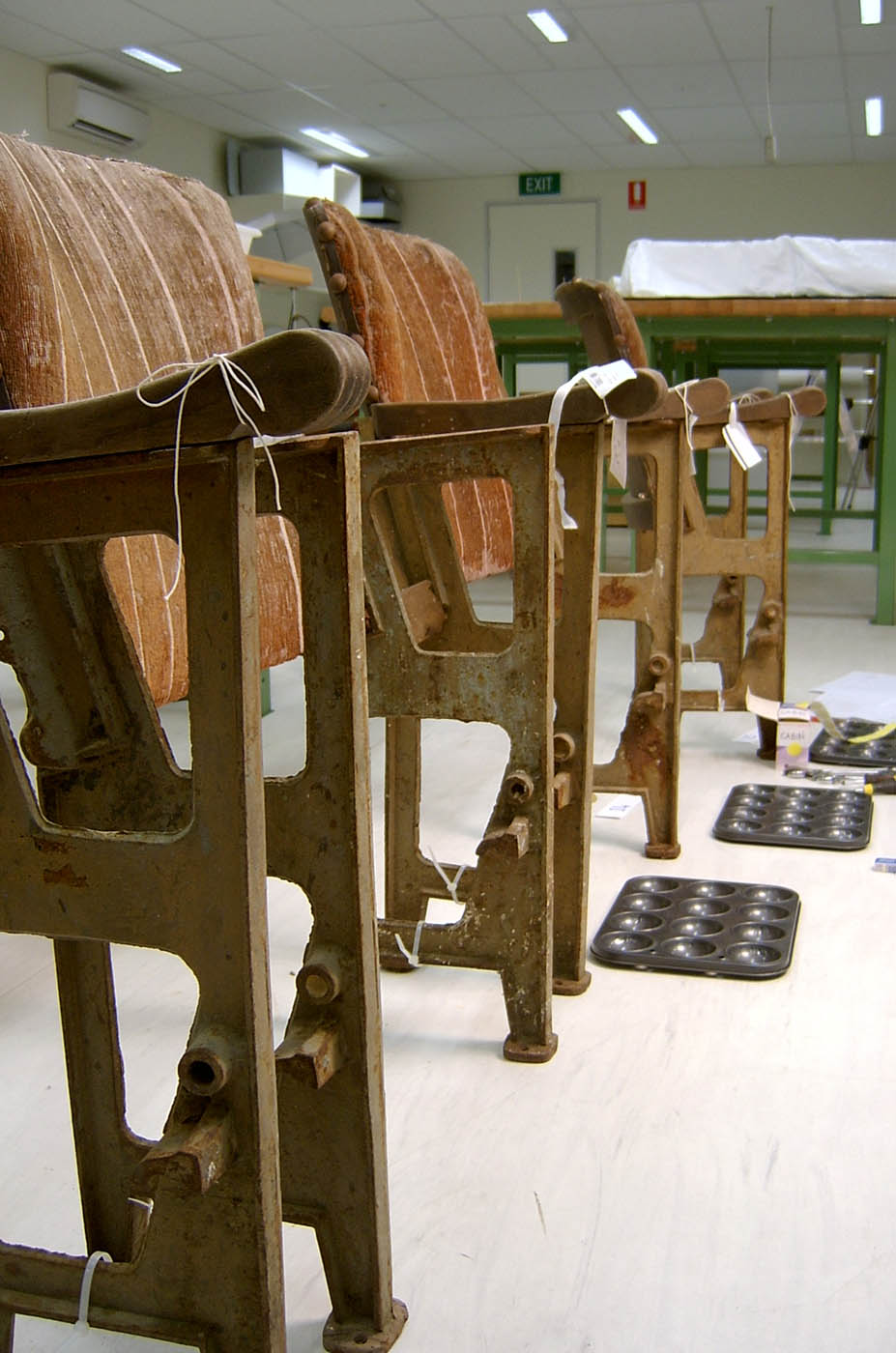National Museum curator Troy Pickwick reflects on a meeting with Gumbayngirr elder Martin Ballangarry during a visit to the Bowraville theatre in northern New South Wales in 2008.
Uncovering the Bowraville theatre seats history

As part of our exhibition research we met with Martin Ballangarry – Gumbayngirr elder, campaigner, spokesperson, OAM – to learn about his childhood days when he used to go to the local cinema.
This cinema at Bowraville was no different to many other cinemas throughout Australia, where white Australians could sit comfortably in plush chairs, while Indigenous Australians would sit on bench-like seats or even lie on the floor.
Martin tells us: 'We would walk down this side, then come around to the back of the theatre. We weren't allowed in the front door.'
Martin recalls it was only one step, but it really was crossing a boundary. At the back entrance, he points and says: 'This light has always been here. It never did set off much light.'
Martin walks on and recalls: 'These steps here, the old fellas, drinkers really, used to play hopscotch on them, jump up and down the stairs. We used to love watching them. For a 10-year-old kid, it was our entertainment. We were welcomed at these steps.'
Amazing, I think. This took place 3 or 4 generations ago. This took place in far out locations of this 'fine' country. This took place in other countries.
Wrong, no, this took place in Australia, in places close to big cities, within a single generation because a man told us his story.
Recent history

We were there with Martin – Museum staff, communicators, photographers, listeners – and what he was telling us was not 'right'.
What he was telling us made us all think about this country – issues of migration, traditional custodians, settlement – and reminded us of the politics of this 'nation'. It was all collectively summed up by a single man telling a story.
Photos, stories, objects. This is what we are here for. This is what we want. This is history. This is objects. This is the National Museum of Australia.
Seats tell a broader story
Martin is a softly spoken man. Sometimes his pronunciation is blurred. This is all slightly deceiving, because while he might be 'uneducated', he is also a philosopher, a well-respected member of the community and a brilliant pianist.
Martin had no problem telling us his story of not being able to sit with others in the local cinema. As he recalls, 'you had to be strong.'

After 40 years, the seats – more like hard benches that resemble a child's cubby house seating arrangement – were dug out from under the cinema as dusty objects.
Martin recalls: 'They were hard on your back, so as kids we would lie on the floor. We would all line up, sometimes 10, maybe 15 people, adults, kids; we were all lying down here. Around 10 minutes before the end of the film, we were ushered out of the cinema, out the back and up the side.'
Martin's people – the Gumbayngirr nation – are from the area around the small town of Bowraville, New South Wales.
Less than 60 kilometres from Coffs Harbour, it is a moderate strip of beautiful beaches, cafes and rising buildings. It is also where today's international rugby sides train for their games.
These are modern day facilities in modern day times – it seems like it has been like that forever. Yet Indigenous Australians may argue about the term 'modern day', because they feel that they have been excluded from many of the developments in the area.
They may be right, and it may be as simple, yet confronting, as looking at the two different types of cinema chairs.
New life for old seats
Segregated theatre seating conservation
National Museum conservators brought new life to some long-forgotten seats from Bowraville’s Ray-Mond Theatre. This movie theatre provided wooden seats for Indigenous patrons and plush seats for others. These two types of seats provide a striking demonstration of racial segregation.
The seats were stored under the theatre for 40 years before being prepared for display in From Little Things Big Things Grow in 2009. Here, conservators share details of the conservation process through photographs and notes.

The seats before conservation
The Bowraville theatre seats arrived at the National Museum in Canberra in various states of disassembly and decay.
The seats were used in the Bowraville theatre until 1965, at which time they were removed and stored in the building’s basement.
The dilapidated appearance of the seats and their components presented a challenge to conservators, who were charged with preparing them for display in the exhibition.
However, the original gold-coloured paint of the cast iron seat supports, a sense of the plush velour upholstery and some traces of original colour and finish on the wooden armrests, were all evident.
These physical traces provided the basis for formulating the conservation approach.
In our collection
Explore From Little Things Big Things Grow
